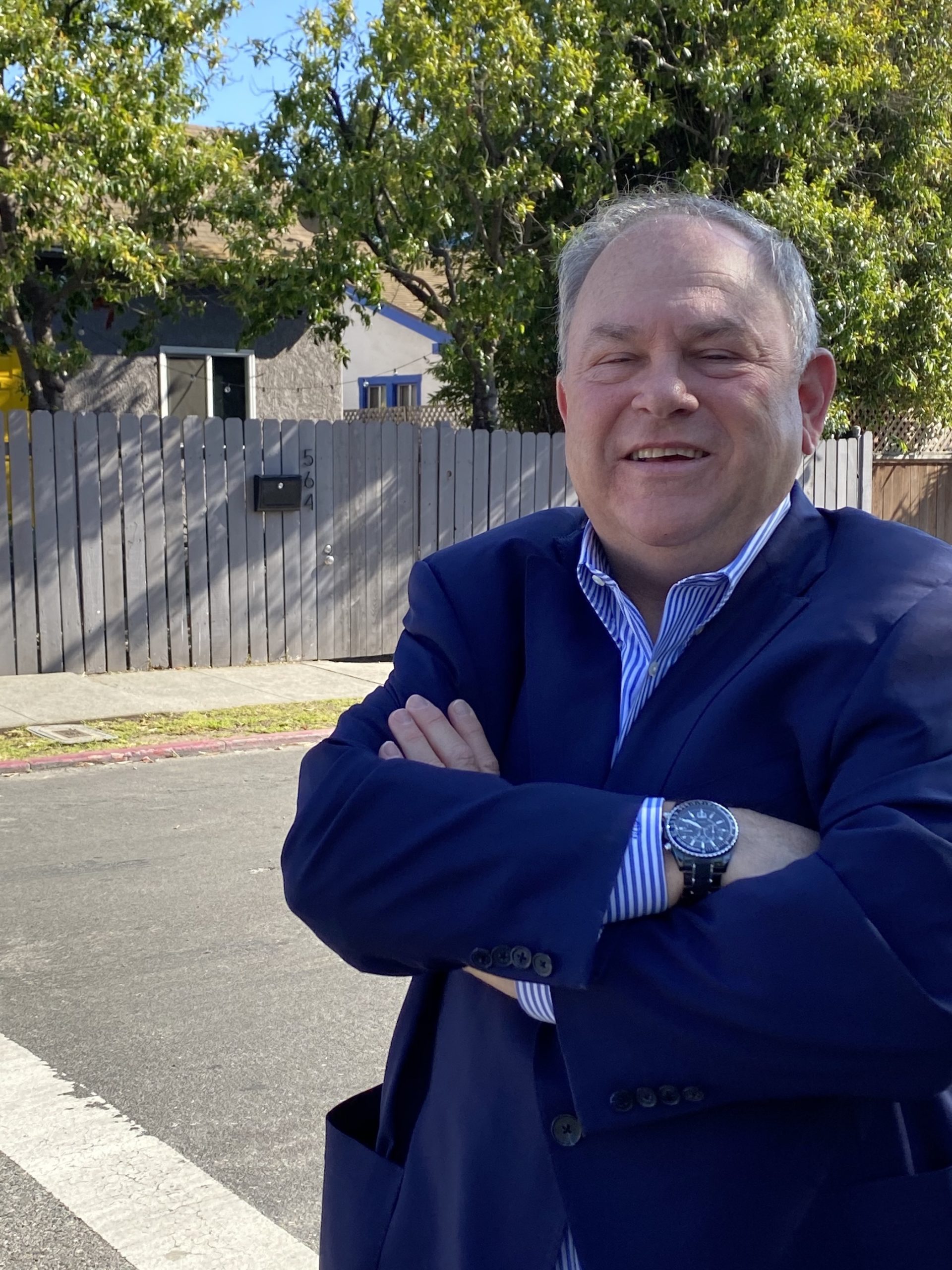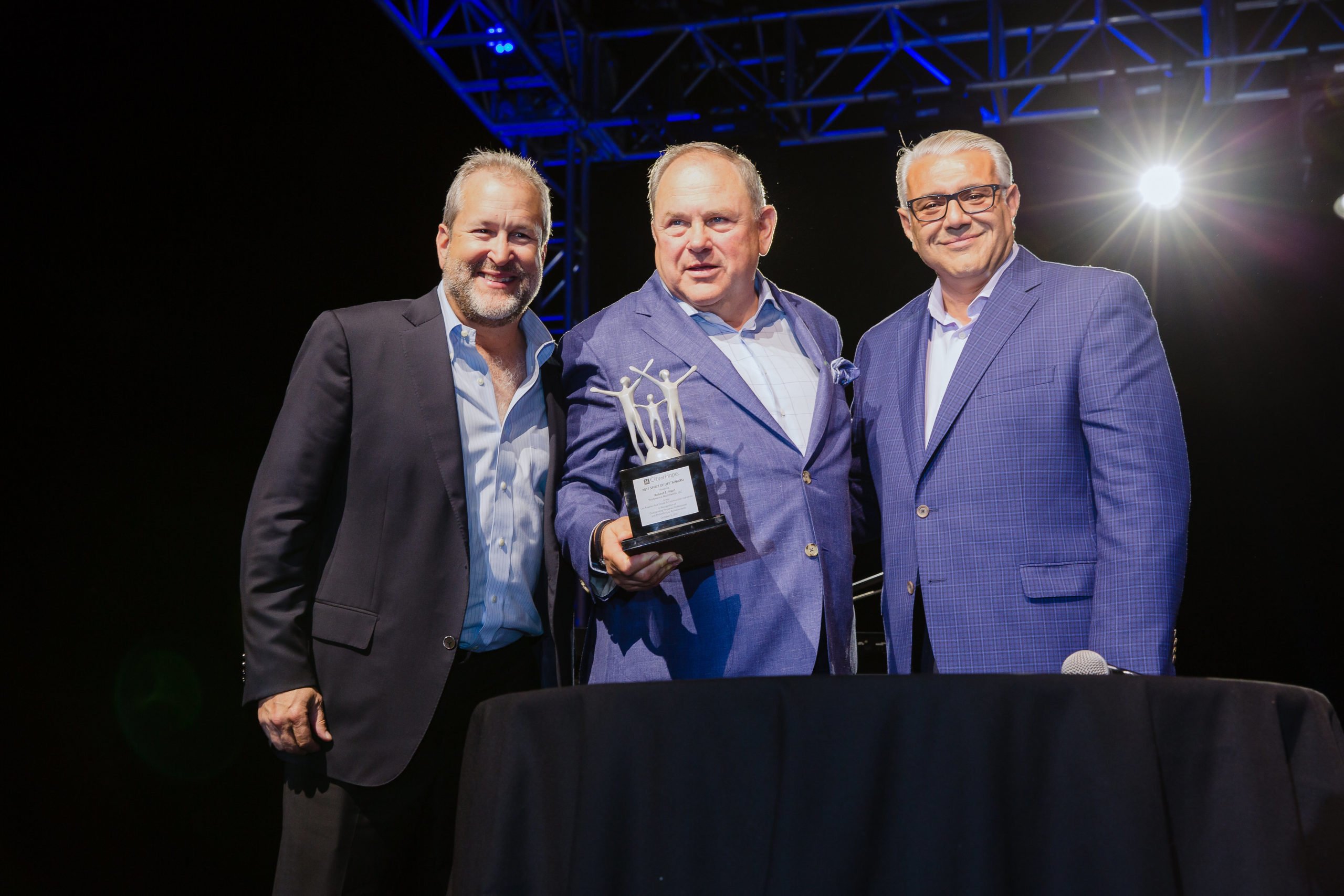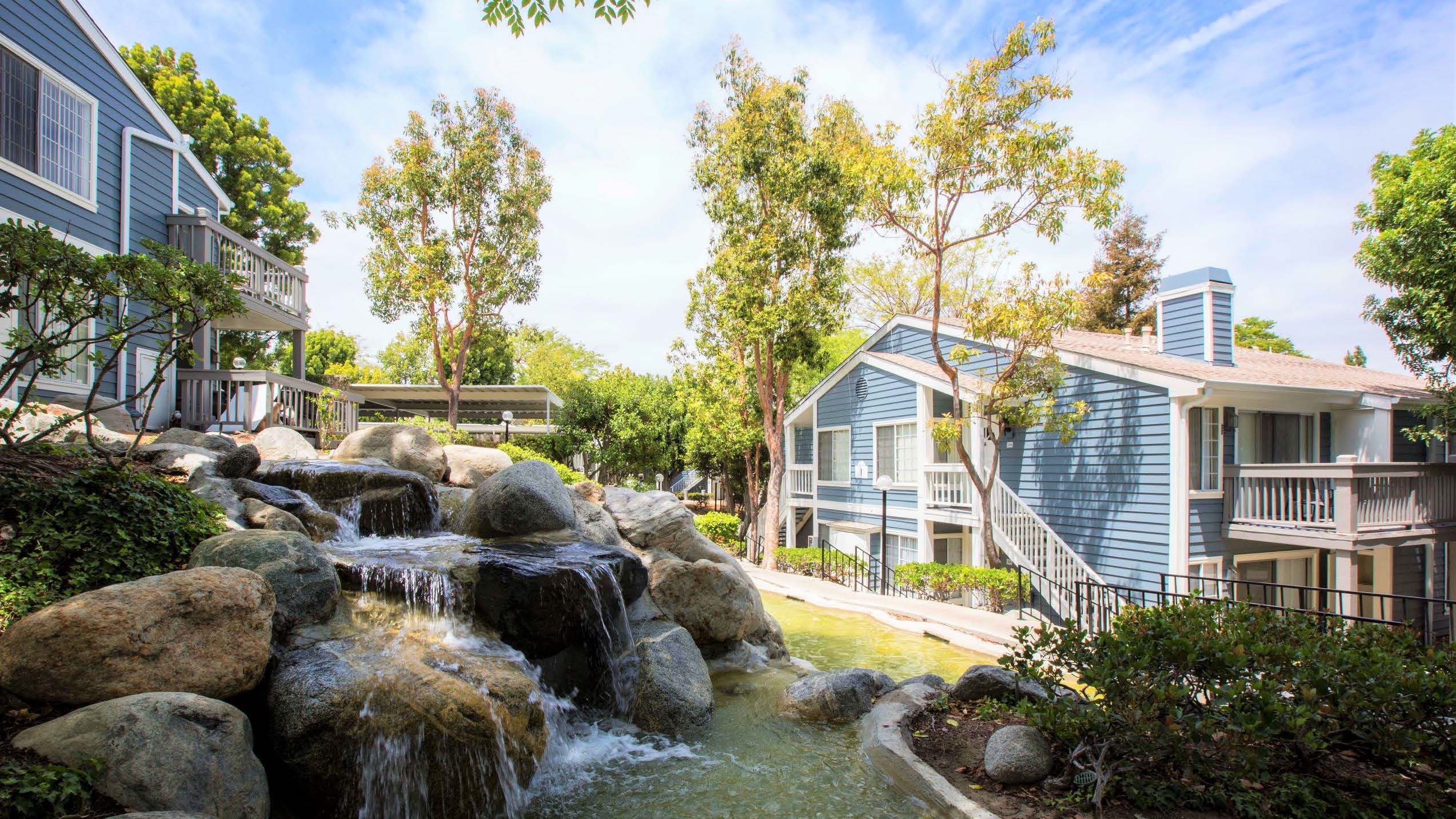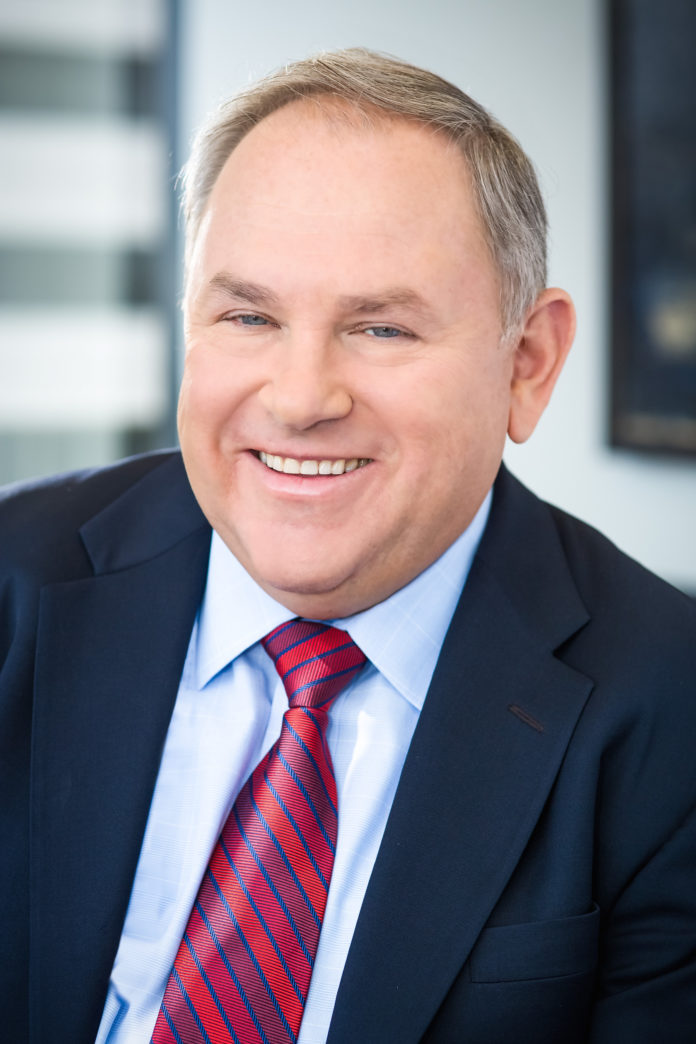For Robert Hart, multifamily real estate is more than just a business that has brought him vast success.
It’s also a category that Hart, who grew up in an apartment outside Boston, happens to be passionate about.
After leadership roles at Kennedy Wilson Inc., Heitman and Executive Life Insurance Co., Hart founded Century City-based real estate investment company TruAmerica in 2013 to fully focus on the multifamily sector.
Today, TruAmerica has roughly $10 billion worth of multifamily assets under management across 40,000-plus units.
In recent years, the company has expanded beyond L.A. to markets including Dallas and Washington, D.C. In 2019, TruAmerica was part of a joint venture that acquired an 896-unit multifamily property in Las Vegas for $152 million, which TruAmerica said is the largest single multifamily asset sale in Nevada.
The company has been making other large-scale purchases as well, reaching transaction volume of more than $1 billion in each of the last two years.
Hart, who has more than 30 years of experience in real estate, spoke with the Business Journal about his career, his multi-family approach, his views on rent control and the impact of Covid-19.
How did you get involved in real estate?
After working for a few years in engineering and later going to graduate school at UCLA, I worked for The Walt Disney Co., and I started investing in real estate while I was in other fields. I bought a duplex in Venice near the ocean. I started out as a real estate entrepreneur while working in other fields.

You were the chief executive of Kennedy Wilson Multifamily Management Group from 2000 to 2013. What did that involve?
Everything in the real estate business starts with some form of investment. From 1987 to the time I joined Kennedy Wilson in 2000, I had been a real estate entrepreneur. I converted from a pure businessman into a full-time real estate executive. When I finally joined Kennedy Wilson in the year 2000, I had been fairly seasoned in owning and operating real estate. I came to that company to start a multifamily group. I started doing acquisitions and over 13 years built that into a business within the larger company. That business grew to be a $3 billion asset-based, vertically integrated company.
How did your other experiences prepare you to start TruAmerica?
Before I was at Kennedy Wilson, I worked at Heitman Capital for three years, and before that, I worked as a director of real estate where I was really in charge of the final liquidation of Executive Life back in the ’90s. I’ve been through both down cycles and up cycles. I really started my career as more of an asset manager doing workouts and the liquidation of underperforming real estate. I learned the aspect of owning and operating real estate through the defensive side, through asset management. My career really shifted after the early ’90s to the early 2000s from defense to offense. When there was nothing more to work out, I turned my attention toward acquisitions but always with an eye toward asset management.
For the last 20 years, I have been focused on the acquisition of real estate and building companies to run. And that’s why I formed TruAmerica in mid-2013. I wanted to really take it to another level on my own.

Why the focus on multifamily at TruAmerica?
Multifamily has always been my focus, and that goes back to childhood. I grew up in a walk-up tenement house in greater Boston in a little section called Chelsea, Mass. I lived in an apartment early in my life and during college, and I’ve always believed in apartment living as being the core of our workforce housing. Multifamily has always been, in my mind, one of the most durable and enduring sectors of our real estate industry. And there’s a lot of opportunity to add value to apartments, particularly Class B, particularly workforce housing where you are dealing with renters.
You focus on value-add acquisitions. Why do this as opposed to ground-up development?
Ground-up development is an art in and of itself. People who do well in that space focus on that space. They are not focusing on what I do, which is Class B. The renovation Class B sector offers more rapid opportunity to create value and to build cash flow for investors. You are stabilizing assets quicker, you are creating more enduring cash flow, which creates what we call a barbell effect between the current cash flow and future value.
What do you look for in an investment opportunity?
We’re looking for real estate that is well-located, close to public transportation or highways, and within a 20- or 25-mile radius of a (central business district). We tend to have more of an urban/suburban strategy. Ideally, we are looking for good school systems. We are looking for close-to-retail conveniences. We are looking for real estate that’s functional where it’s a balance of two bedrooms for families and one bedrooms for individuals. We are also looking for areas of the real estate that we can improve from an amenity standpoint, an aesthetics standpoint and to reappoint the units. That way we can upgrade and capture a little bit more rent, which then improves the investment.
What markets are you most interested in?
We’ve always been a hometown investor. We are a big believer in Southern California despite some of the headwinds here with the rent control initiatives and so forth. We’re also interested in 15 other markets in the country. We’ve been a big net buyer in Arizona, greater Phoenix; greater Las Vegas; central Florida — Tampa and Orlando — Atlanta; and Raleigh-Durham, N.C. This is our home here. We’ve always stayed focused on California, but we’ve become more of a national company now, and we’ve looked beyond California as well.
What markets within L.A. have you been investing in?
We made a major investment about five years ago in Koreatown. We own the largest building there, called the Vermont/Wilshire, which we own with a principal. We like the center of the city. We have also been investors in the Santa Clarita Valley, in the South Bay, in San Pedro and Lakewood and areas like that. We have been a big, strong suburban investor as well as urban at times.

How do you manage risk?
We want to make sure that the assets are going to cash flow well and collect well. It’s really about proper management, proper supervision of the asset, and once we feel comfortable that the asset is functioning correctly, then we get into the renovations, and we start generally renovating the common areas first for functional obsolescence, and then we start turning units where we renovate apartments as people move out.
How much do you improve the units?
If you are buying an apartment community for say $200,000 per unit, we try to avoid putting more than 10% or 15% in on top of the price. The more capital we have to put in to improve it, the more rent we have to charge. We are trying to keep the rent inflation down. The key is not to over-improve. When you buy a building, you are usually spending somewhere between $8,000 and $12,000 inside the apartment itself. You are trying to do that in a way that creates modernity of the appliances, countertops. Giving people something that would feel very proud to live in, but at the same time you are not over-improving it. We are using synthetic wood floors instead of hardwood floors, we use tile backsplashes that are easy to install, we are using appliances that are aesthetically pleasing and durable but are not costing $4,000 or $5,000 per unit — they are costing $1,500 per unit. We are looking for materials that are affordable and we can get it done quickly and keep our costs down.
How has the coronavirus affected your strategy?
Like everybody on the investment side of the business, it has basically brought that to pretty much a halt. We oversee 43,000 apartments in 16 markets. We have a diversity of locations. We are focusing on operations and making sure our buildings are collecting rent and making sure people are safe. We are doing everything we can to safeguard the assets and focus more on defense right now than offense.
Have there been a lot of requests for rent abatements and concessions?
The third of the month was the first day that we started really closely monitoring it and were pleasantly surprised. Across our entire portfolio, over 60% of the people had paid their rent. As of (April 10), that number had jumped to almost 90% of billable rent. We are very encouraged by that, that people that can are paying the rent. We’re billing about $60 million a month in rent. You still have a lot of rent to collect there. I would say of the 10% so far that haven’t paid rent, maybe under 5% are looking for some sort of forbearance on their rent for some time. It’s been a relatively small number so far.
Are there more opportunities now to buy distressed assets?
We’re opportunistic like everybody in our business, but we’re also going to be cautious. The market is in flux, and until you know what rent role you are buying, it’s going to be very hard to judge investment metrics. Right now, we are really in a holding strategy more than an acquisition strategy for the time being, but we are also looking at opportunities where there has been some dislocation. And in multifamily there is a debt market to finance real estate. This crisis was not brought on by investments or banks or anybody, so there is still a lot of equity in the system looking for a home. But the big question is, at what value or what price? You don’t want to be overly optimistic too soon.
How has rent control that went into effect statewide earlier this year affected the business?
It certainly puts up a yellow flag. The measure that was adopted, Bill 1482, was basically an anti-gouging measure that still preserved vacancy decontrol. Landlords like ourselves are okay in the sense that we depend on organic rental turnover of apartments. The measure that was put in place was not heralded by landlords, but it was fair. When you get into legislation that has been on the ballot to repeal Costa Hawkins, or other local measures that the city council has been working on to reduce rents, that’s going to be very problematic and making investing in California very challenging. Right now, no one is talking about raising rents. No one is talking about pushing tenants out. Nobody is talking about charging any kind of late fees. Everybody is working together to normalize the system. If the laws become stricter, and we take away vacancy decontrol, that is going to make it very challenging to do what we do in Southern California, and that is why we have diversity in our company beyond California.
What does the future look like for TruAmerica?
We are very dedicated to the Class B space, and our goal is to be a national company. We continue to move eastward. We just opened an office in the center of the country in Dallas. We have an office in Arlington, Va., which is very robust, we have an office in Florida. We are continuing to link up the country. We continue to focus on major metros in the West but also major metros of the Mid-Atlantic, Southeast and soon the center of the country. We continue our focus on Class B multifamily housing and trying to do that with the lowest cost of capital we have. For Southern California, we are not developers, but there are going to continue to be huge development opportunities here even despite rent control.

